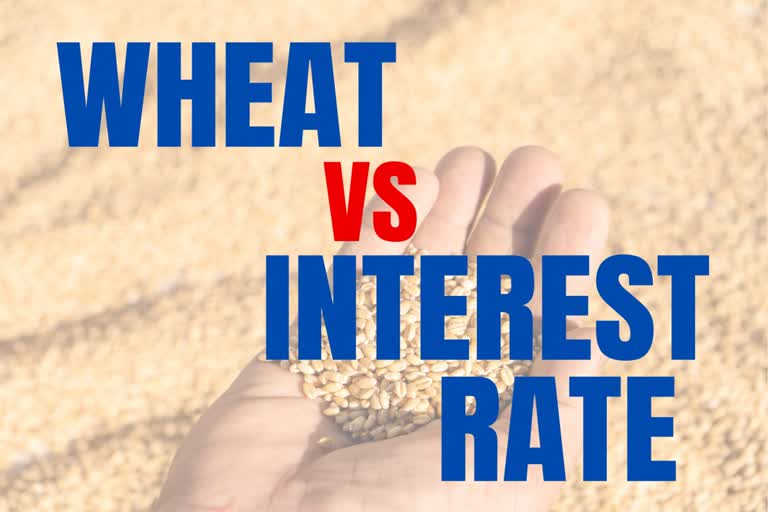New Delhi: The price of wheat and wheat-based products in the retail market are on a constant rise for nearly one-and-a-half years and they are expected to remain at an elevated level in the foreseeable future due to unusually high temperature in the month of February this year.
Inflation vs Int rate-High retail inflation of wheat and wheat products, which is in double digits since July last year, has a direct bearing on the policy rates, the repo and reverse repo rates at which banks borrow from the Reserve Bank or park their surplus funds with the RBI, which in turn reflect in the interest rates for the loans taken by the businesses and individuals such as home loan, auto loan, persona loan and other loans.
Wheat price-The prices of wheat and wheat products in the retail market started rising from October 2021 when it emerged from the negative territory to be 1% costlier than their prices in October 2020. However, at that time it would have been difficult for anyone to assume that the prices would continue to rise for another 14 months on a year-on-year basis as India is a major wheat growing nation with sufficient surplus stock for ensuring food security.
However, as the data shows that except for the month of May 2022 when there was a marginal dip of 10 basis points (one-tenth of a percent), from 8.6% to 8.5% on a year-on-year basis, there is constant increase in the retail prices of wheat and wheat products. Situation further aggravated when in July last year the retail inflation of wheat and wheat products hit the double digit mark of 10.7% and since then the wheat prices have remained in double digits.
Moreover, as per the latest official data, in January this year, the retail inflation of wheat and wheat products crossed the mark of 20%. If there were any hopes of cooling down wheat prices in the near-term then it has come under cloud due to unusually high temperature in the month of February in some parts of the country, especially in the state of Punjab which is known as the food bowl of the country.
Wheat products in CPI- Wheat and wheat-related products have a combined weight of 3.89% in Consumer Price Index (CPI). However, their contribution to retail inflation was 11.4% and 11.0%, respectively, in December 2022 and January 2023, way above their weight in the crucial index to measure the retail inflation in the country.
The other food items that are contributing more than their weight in the retail inflation index are milk and milk products, spices and prepared meals, snacks, sweets etc. Vegetables have a weight of 6.04% in CPI and their contribution to retail inflation in December 2022 and January 2023 has been negative 18.0% and negative 11.5%, respectively.
RBI mandate- Elevated prices of wheat and wheat products, which have been in double digits since July last year, was more offset due to a sharp deflation in vegetable prices. There is a pressure on retail inflation due to rising cereal prices, especially wheat, protein-based food items and spices. High retail prices of wheat and other food products have a direct impact on the policy rates set by the Reserve Bank as per the section 45ZA of the RBI Act of 1934.
Sub Section 1 of the Section 45ZA of the RBI Act says that the Central Government shall, in consultation with the Bank, determine the inflation target in terms of the Consumer Price Index, once in every five years. Under the law, the RBI is mandated to maintain the retail inflation in the country at 4% with a variance of not more than 2%. If the retail inflation remains above 6%, the upper band set by the government then it needs to explain the reasons to the government.
Raising repo rates- In order to cool down the retail prices, measured as the CPI, the RBI has been raising policy interest since May 2022 when the retail prices of wheat and wheat products were 8.5% higher on a year-on-year basis. Since then the RBI has increased the policy rate by 250 basis points (2.5%).
Despite expectation from some quarters, the Reserve Bank has not yet paused its rate hike and had increased the policy repo rate by another 25 basis points in the monetary policy announced last month. High wheat prices, which are expected to remain at an elevated level due to unusually high warm temperature in February this year, will make the Reserve Bank’s job of inflation management even more complicated as vegetables prices are expected to rise with the onset of summer and their contribution to CPI to turn positive.
In such a situation, it would be difficult for the Reserve Bank to contemplate any interest rate reduction in the near future and as a result interest rates on loans such as home loans, auto loans and personal loans are not expected to come down.



